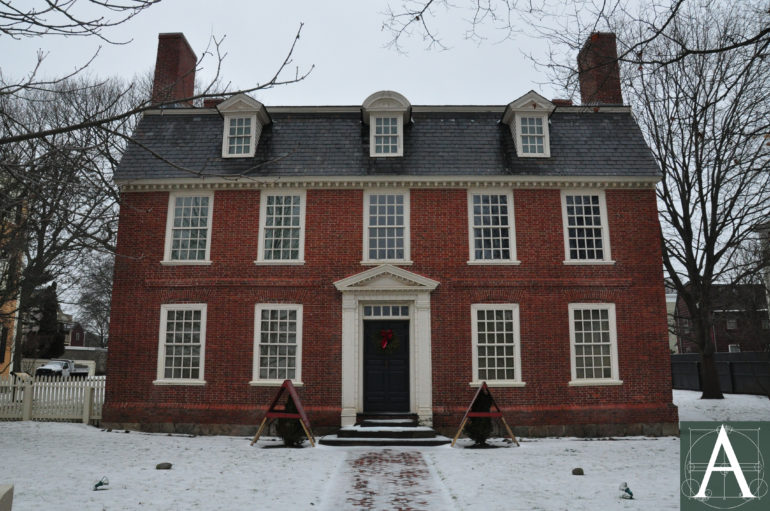The Derby House was constructed in 1761-62 by Captain Richard Derby (1712-1783), a wealthy Salem merchant, for his son, Elias Hasket Derby (1739-1799), reputedly at the time of the younger Derby’s marriage. The house was built in close proximity to Richard Derby’s House, overlooking the harbor and wharves that provided the basis for the family’s wealth. The house was occupied for a relatively short time by the younger Derby who was, by 1778, renting another house elsewhere in Salem. Between 1778 and 1779, the house was rented to the parents of George Nichols, a prominent shipmaster who was born in Salem in 1778. Subsequently, the house was occupied by Henry Prince, a shipmaster for the Derby Family. Following the death of Richard Derby, title to the house passed to Elias Hasket Derby as part of his share of his father’s estate. In 1796, Derby sold the house to Prince, who failed financially due to the Jefferson Embargo and was forced to sell the house to William Ropes, a Boston merchant, in 1811. It is likely that Ropes built the kitchen wing shortly after acquiring the house and that the former kitchen hearth within the original house was removed at this time.
After passing through several owners and declining in condition, the Derby House was acquired by the Society for the Preservation of New England Antiquities (SPNEA – now Historic New England) in 1927. Some restoration and repair work was undertaken by the organization under the supervision of George Francis Dow, a noted antiquarian of the period, and Alfred F. Shurrocks, an architect associated with some of the early restoration work done by SPNEA. In 1937, the house was given to the Federal Government, Department of the Interior. A second round of restoration was undertaken under the supervision of Stuart Barnette and with the involvement of Frank Chouteau Brown, a restoration architect who was actively involved in documenting the region’s notable buildings for the Historic American Buildings Survey under the Works Progress Administration after 1933.

